
Marine transportation service company Kirby (NYSE: KEX) reported revenue ahead of Wall Street’s expectations in Q2 CY2025, with sales up 3.8% year on year to $855.5 million. Its GAAP profit of $1.67 per share was 2.7% above analysts’ consensus estimates.
Is now the time to buy Kirby? Find out by accessing our full research report, it’s free.
Kirby (KEX) Q2 CY2025 Highlights:
- Revenue: $855.5 million vs analyst estimates of $847.4 million (3.8% year-on-year growth, 0.9% beat)
- EPS (GAAP): $1.67 vs analyst estimates of $1.63 (2.7% beat)
- Adjusted EBITDA: $202.2 million vs analyst estimates of $197.5 million (23.6% margin, 2.4% beat)
- Full-year guidance maintained, but company added that "recent shifts in trade policy" means "we will likely be closer to the lower end of our prior full year EPS growth guidance"
- Operating Margin: 15.4%, in line with the same quarter last year
- Free Cash Flow Margin: 2.6%, down from 11% in the same quarter last year
- Market Capitalization: $6.73 billion
David Grzebinski, Kirby’s Chief Executive Officer, commented, “Kirby delivered another solid quarter, with strong performance across both marine transportation and distribution and services. Our teams executed well in a dynamic environment, and we continued to benefit from healthy customer demand, disciplined pricing, and operational focus.”
Company Overview
Transporting goods along all U.S. coasts, Kirby (NYSE: KEX) provides inland and coastal marine transportation services.
Revenue Growth
Reviewing a company’s long-term sales performance reveals insights into its quality. Even a bad business can shine for one or two quarters, but a top-tier one grows for years. Over the last five years, Kirby grew its sales at a tepid 5.5% compounded annual growth rate. This fell short of our benchmark for the industrials sector and is a poor baseline for our analysis.
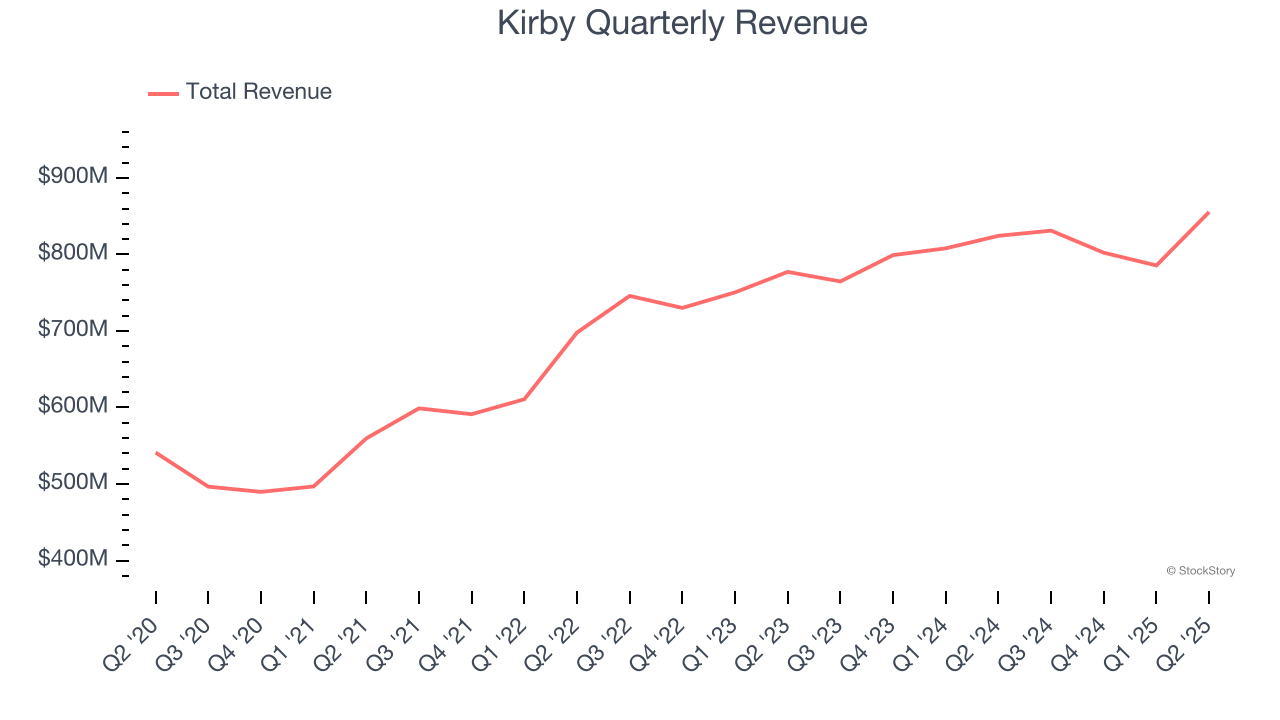
Long-term growth is the most important, but within industrials, a half-decade historical view may miss new industry trends or demand cycles. Kirby’s recent performance shows its demand has slowed as its annualized revenue growth of 4.4% over the last two years was below its five-year trend. We also note many other Marine Transportation businesses have faced declining sales because of cyclical headwinds. While Kirby grew slower than we’d like, it did do better than its peers. 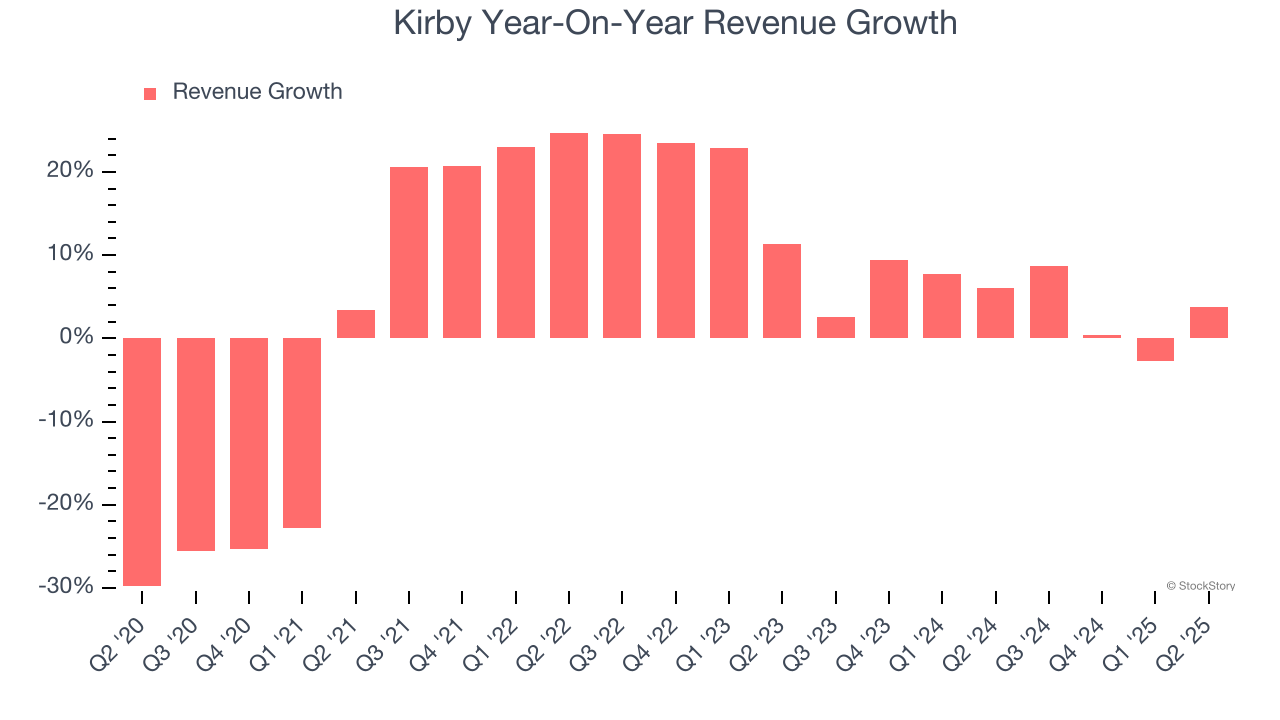
We can dig further into the company’s revenue dynamics by analyzing its most important segments, Marine Transportation and Distribution and Services, which are 57.6% and 42.4% of revenue. Over the last two years, Kirby’s Marine Transportation revenue (petroleum products and chemicals) averaged 6.6% year-on-year growth while its Distribution and Services revenue (aftermarket parts and equipment) averaged 1.9% growth.
This quarter, Kirby reported modest year-on-year revenue growth of 3.8% but beat Wall Street’s estimates by 0.9%.
Looking ahead, sell-side analysts expect revenue to grow 6.4% over the next 12 months. Although this projection indicates its newer products and services will spur better top-line performance, it is still below the sector average.
Unless you’ve been living under a rock, it should be obvious by now that generative AI is going to have a huge impact on how large corporations do business. While Nvidia and AMD are trading close to all-time highs, we prefer a lesser-known (but still profitable) stock benefiting from the rise of AI. Click here to access our free report one of our favorites growth stories.
Operating Margin
Operating margin is one of the best measures of profitability because it tells us how much money a company takes home after procuring and manufacturing its products, marketing and selling those products, and most importantly, keeping them relevant through research and development.
Kirby was profitable over the last five years but held back by its large cost base. Its average operating margin of 6.9% was weak for an industrials business. This result isn’t too surprising given its low gross margin as a starting point.
On the plus side, Kirby’s operating margin rose by 8.6 percentage points over the last five years, as its sales growth gave it operating leverage. We’ll take Kirby’s improvement as many Marine Transportation companies saw their margins fall (along with revenue, as mentioned above) because the cycle turned in the wrong direction.
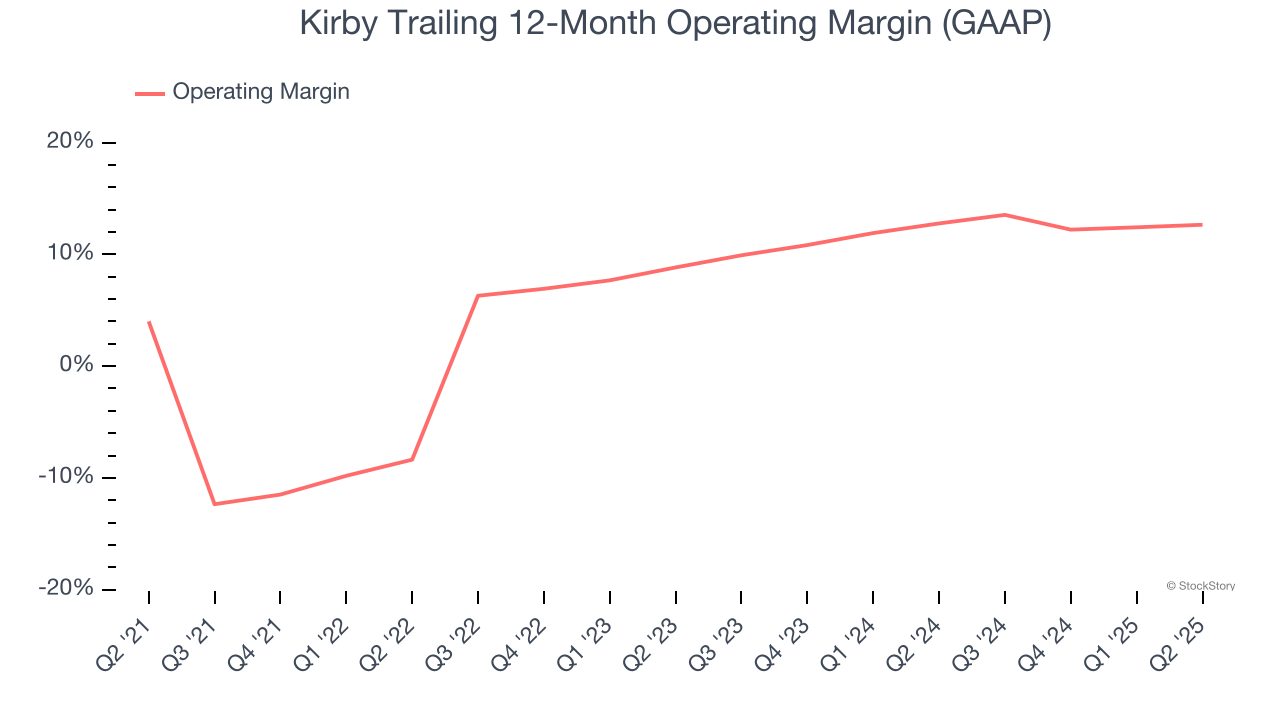
In Q2, Kirby generated an operating margin profit margin of 15.4%, in line with the same quarter last year. This indicates the company’s cost structure has recently been stable.
Earnings Per Share
Revenue trends explain a company’s historical growth, but the long-term change in earnings per share (EPS) points to the profitability of that growth – for example, a company could inflate its sales through excessive spending on advertising and promotions.
Kirby’s full-year EPS flipped from negative to positive over the last five years. This is encouraging and shows it’s at a critical moment in its life.
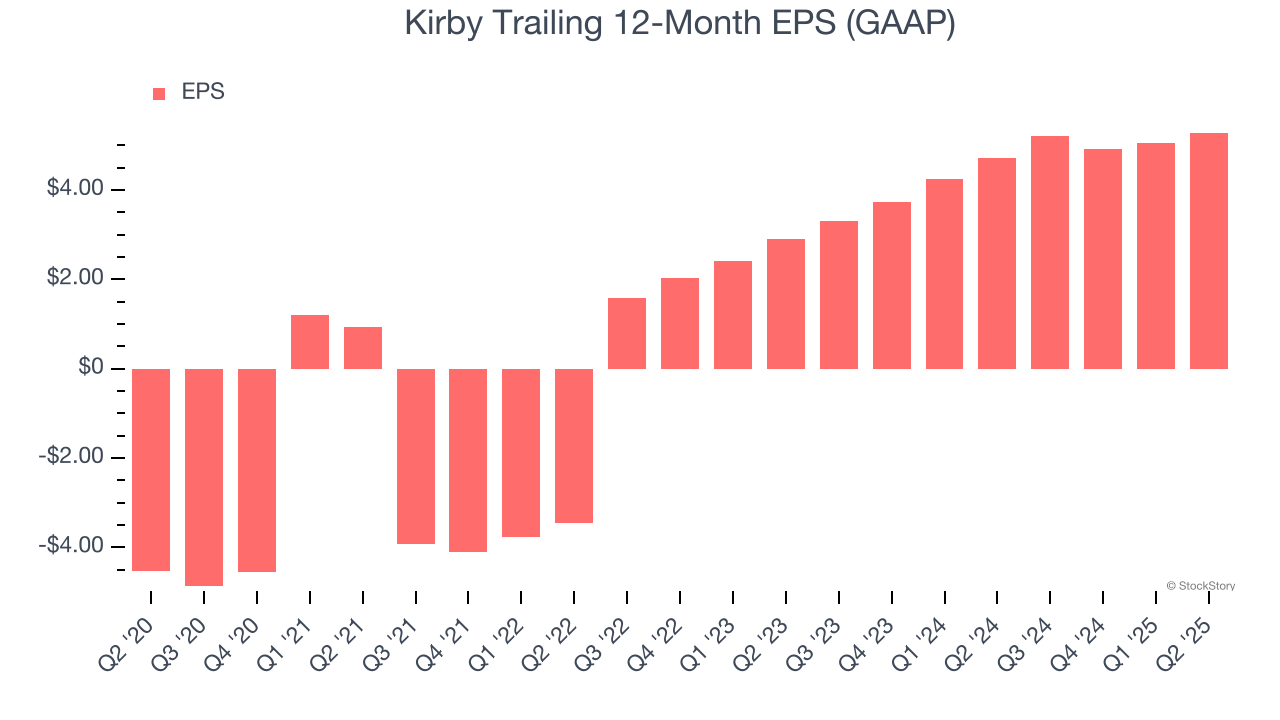
Like with revenue, we analyze EPS over a shorter period to see if we are missing a change in the business.
Kirby’s EPS grew at an astounding 35% compounded annual growth rate over the last two years, higher than its 4.4% annualized revenue growth. This tells us the company became more profitable on a per-share basis as it expanded.
We can take a deeper look into Kirby’s earnings quality to better understand the drivers of its performance. While we mentioned earlier that Kirby’s operating margin was flat this quarter, a two-year view shows its margin has expanded by 4.2 percentage pointswhile its share count has shrunk 6.1%. Improving profitability and share buybacks are positive signs for shareholders as they juice EPS growth relative to revenue growth. 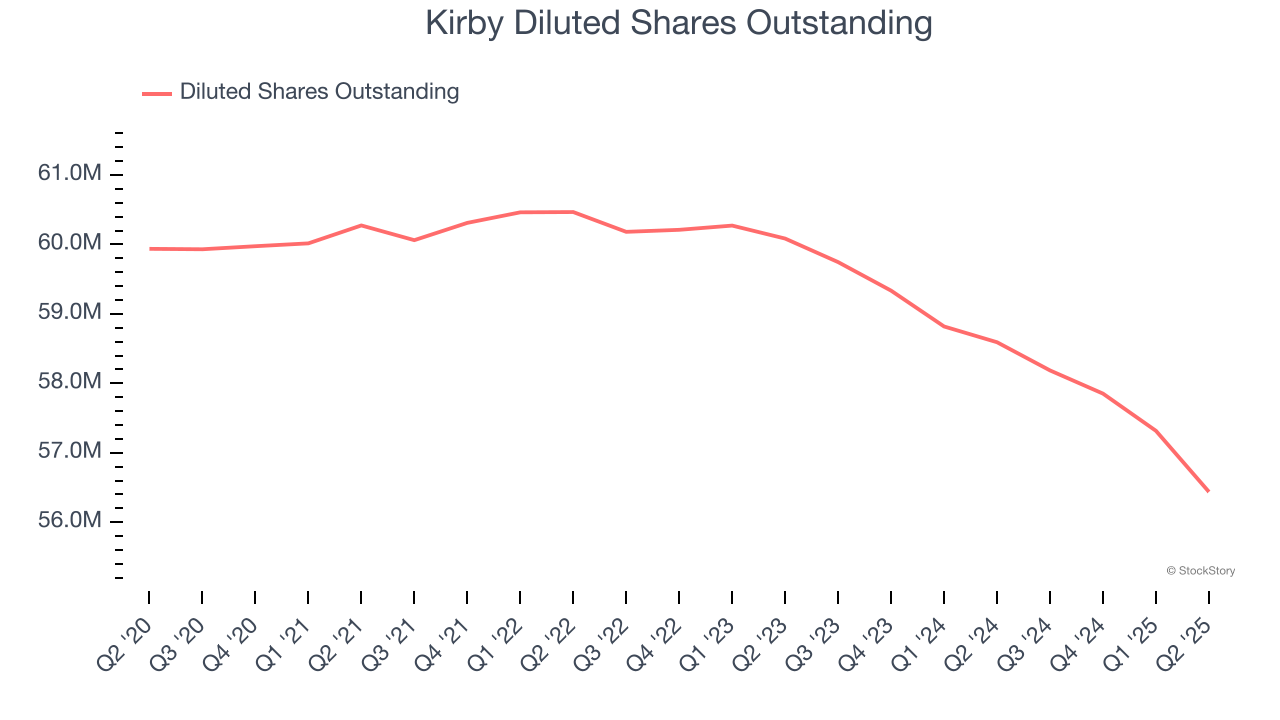
In Q2, Kirby reported EPS at $1.67, up from $1.43 in the same quarter last year. This print beat analysts’ estimates by 2.7%. Over the next 12 months, Wall Street expects Kirby’s full-year EPS of $5.28 to grow 28.7%.
Key Takeaways from Kirby’s Q2 Results
It was encouraging to see Kirby beat analysts’ revenue and EBITDA expectations this quarter. While full-year earnings growth guidance was maintained, the company added that "recent shifts in trade policy" mean "we will likely be closer to the lower end of our prior full year EPS growth guidance". This is the type of uncertainty that spooks investors. The stock traded down 5.1% to $113.99 immediately after reporting.
Is Kirby an attractive investment opportunity right now? If you’re making that decision, you should consider the bigger picture of valuation, business qualities, as well as the latest earnings. We cover that in our actionable full research report which you can read here, it’s free.




